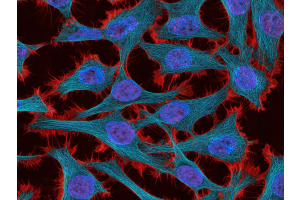Mystery around a high-risk leukaemia solved
Last updated: 01 November 2019
You can legally access new medicines, even if they are not approved in your country.
Learn more »Investigators have discovered the routes and identified mutations associated with a baffling form of acute leukaemia.
Researchers from the St. Jude Children's Research Hospital have identified mutations that define the two most common subtypes of mixed phenotype acute leukaemia (MPAL): B/myeloid and T/myeloid. The research showed the mutations were present in developmentally "immature" blood cells, including the blood (hematopoietic) stem cells that give rise to all other blood cell types. This finding helps resolve an unexplained hallmark of MPAL -- why leukemic cells have both myeloid and lymphoid features.
"These findings suggest that the founding mutation occurs early in blood cell development, in some cases in hematopoietic stem cells, and results in an acute leukaemia with features of both myeloid and lymphoid cells," said Thomas Alexander, M.D., formerly of St. Jude and now of the University of North Carolina at Chapel Hill.
More broadly, the research adds to evidence from cancer genetics to support a model of blood system development in which the destiny of developing blood (progenitor) cells is determined later in the developmental process than previously recognized.
"These results offer a leap in understanding about this disease that provides a genetically based framework for designing clinical trials to develop more effective treatments of MPAL," Hiroto Inaba, M.D., Ph.D., an associate member of the St. Jude Department of Oncology said.
Based on the results, researchers have proposed updating the World Health Organization's classifications of acute leukaemia to include three new MPAL subtypes.
Read more on Science Daily.






